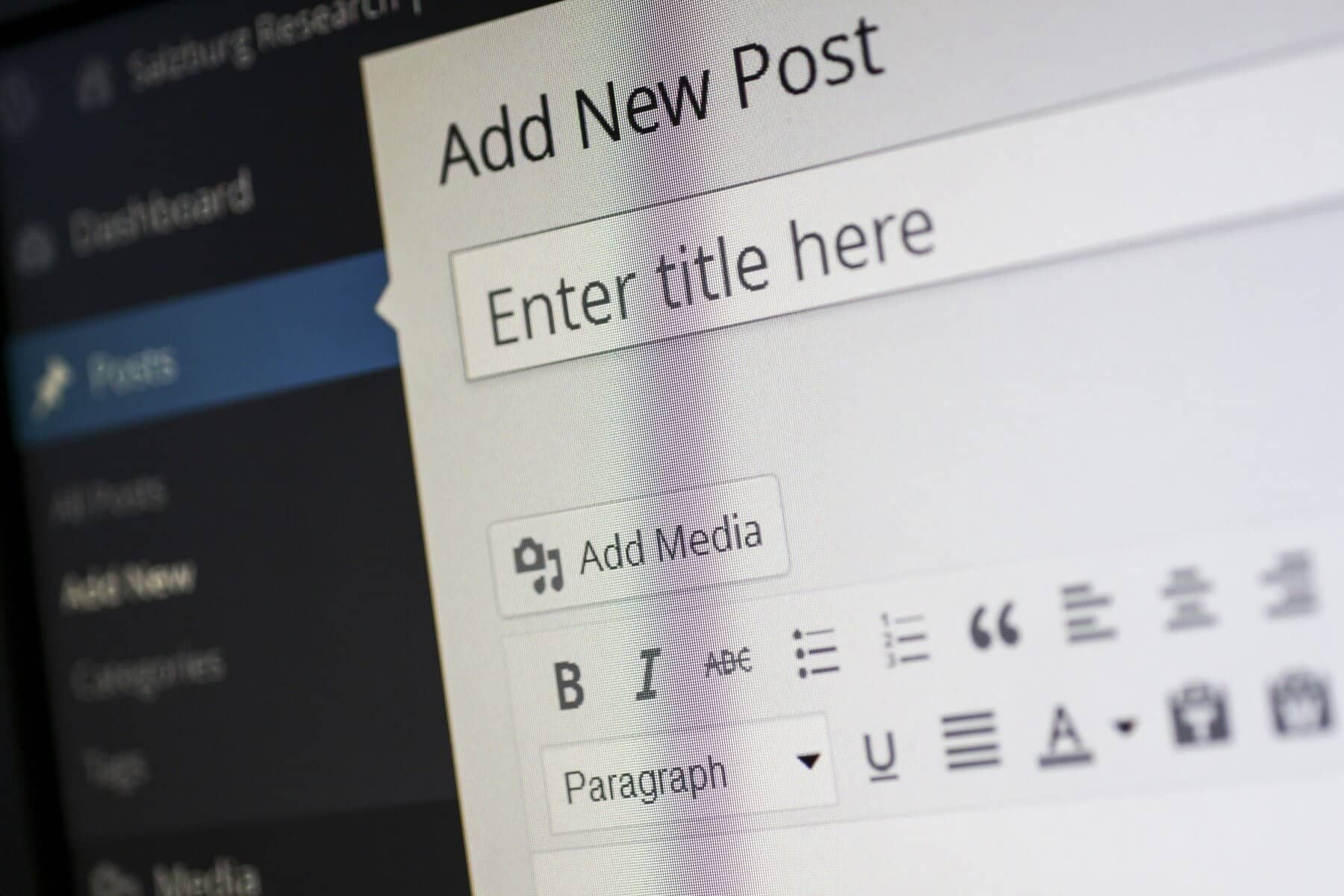
In today’s digital landscape, a fast-loading website is crucial for retaining visitors and improving search engine rankings. If you’re running a WordPress site, you may have noticed that its performance can sometimes lag. However, with the right strategies, you can significantly speed up your WordPress site and enhance user experience. In this comprehensive guide, we’ll walk you through various techniques to boost your site’s speed.
1. Choose a Reliable Hosting Provider
The foundation of a fast WordPress site starts with a reliable hosting provider. Your hosting environment can make a significant difference in performance, especially during high traffic periods. While shared hosting may be cost-effective, it often leads to slower load times due to multiple sites sharing the same server resources. To achieve optimal speed, consider investing in a reputable managed WordPress hosting service. These providers specialize in WordPress and typically offer features such as server optimizations, built-in caching, and enhanced security measures that contribute to faster load times. Additionally, look for hosting plans that offer scalable resources, so you can easily upgrade as your site grows and traffic increases.
2. Use a Lightweight Theme
A theme’s design can significantly impact your site’s loading speed. Heavy themes packed with features, sliders, and customizations can slow down your website considerably. Opting for lightweight and well-coded themes that don’t have unnecessary features can lead to a noticeable improvement in performance. Popular lightweight themes include Astra, GeneratePress, and Neve, all of which are designed to load quickly while still providing a beautiful user experience. Before making a selection, always check user reviews and test the demo to ensure it meets your design needs without sacrificing speed. A theme that focuses on simplicity and performance can help create a seamless browsing experience for your visitors.
3. Optimize Images
Large images can drastically slow down your site, making image optimization an essential aspect of speeding up your WordPress site. To prevent this, follow a series of steps that ensure your images are both visually appealing and lightweight. Start by resizing images using image editing tools before uploading them to your site; this will help you eliminate unnecessary dimensions. Next, use plugins like Smush or Imagify to compress images without sacrificing quality. These plugins will automatically optimize images upon upload, ensuring they are lightweight while maintaining their visual integrity. Additionally, consider using proper formats for your images: JPEG is ideal for photos due to its compression capabilities, while PNG is best for graphics that require transparency. By implementing these image optimization strategies, you can significantly enhance your site’s loading speed.

4. Leverage Caching
Caching can greatly improve your site’s speed by serving static versions of your content to users, which reduces the need for repeated database queries. When a user visits your site, the server doesn’t have to generate the page from scratch each time; instead, it can quickly serve the cached version. Consider installing a caching plugin such as WP Super Cache, W3 Total Cache, or WP Rocket (a premium option) to take advantage of caching benefits. These plugins can help cache pages, posts, and other resources effectively, leading to faster load times. Additionally, some caching plugins offer features like browser caching and CDN integration, which can further enhance performance. Configuring these plugins correctly is key; ensure you follow their setup guides to maximize the benefits of caching on your WordPress site.
5. Minimize HTTP Requests
Every element on your page (images, scripts, CSS files) generates an HTTP request, and the more requests, the longer it takes for your page to load. To minimize these requests, you can implement several strategies. One effective method is to combine files—use plugins that can merge multiple CSS and JavaScript files into a single file, reducing the number of requests needed to load your site. This not only speeds up load times but also helps in managing resources more efficiently. Additionally, be mindful of external scripts; while they can enhance functionality, reducing the number of external scripts (like social sharing buttons and ads) can lead to faster loading times. By streamlining the elements on your pages, you can significantly enhance your site’s performance and improve user experience.
6. Optimize Your Database
Over time, your WordPress database can accumulate unnecessary data, such as post revisions, spam comments, and transient options, which can slow down your site. Regularly optimizing your database is essential to maintaining performance and ensuring smooth operation. You can achieve this by using plugins like WP-Optimize or Advanced Database Cleaner. These plugins help clean up your database by removing unwanted data and optimizing tables, leading to improved performance. Additionally, consider scheduling regular database cleanups to automate the process and keep your site running smoothly. By keeping your database lean and efficient, you can minimize delays caused by excessive data and enhance the overall speed of your WordPress site.
7. Implement a Content Delivery Network (CDN)
A Content Delivery Network (CDN) distributes your website’s static files across multiple servers located around the world. This means that when a user visits your site, they can download files from the nearest server, reducing load times significantly. CDNs work by caching your content and delivering it to users based on their geographic location, which enhances the speed and performance of your site for visitors from different regions. Popular CDN services include Cloudflare, MaxCDN, and KeyCDN. Integrating a CDN with your WordPress site is often straightforward, requiring minimal setup. Once configured, a CDN can provide substantial speed improvements, especially for users who are located far from your web server. Implementing a CDN can not only speed up your site but also improve security and reduce server load.

8. Use Gzip Compression
Gzip compression is an effective method for reducing the size of your website’s files, which ultimately speeds up loading times. When enabled, Gzip compresses the files sent from your server to the user’s browser, allowing for faster transfer rates. Most modern web hosts support Gzip compression, and you can enable it easily using various methods. For instance, many caching plugins have Gzip options built-in, allowing you to enable compression with just a few clicks. Alternatively, if you’re comfortable editing files, you can add code to your .htaccess file to enable Gzip compression manually. Here’s a simple snippet to include:
9. Regularly Update WordPress, Themes, and Plugins
Outdated software can slow down your site and introduce security vulnerabilities that can compromise your website’s integrity. It’s crucial to ensure you regularly update WordPress core, themes, and plugins to the latest versions. These updates often contain performance enhancements and bug fixes that can improve your site’s speed and reliability. Enable automatic updates where possible to simplify the process, but also make it a habit to check for updates manually and review your installed plugins and themes. Additionally, consider removing any unused or inactive plugins and themes to streamline your website and reduce potential security risks. By staying current with updates, you can maintain a high-performing and secure WordPress site.
10. Monitor Your Site’s Performance
To effectively gauge the success of your speed optimization efforts, regularly monitor your site’s performance using tools that provide insights and recommendations for further improvements. Tools like Google PageSpeed Insights, GTmetrix, and Pingdom can help you analyze your site’s speed and identify areas for enhancement. These platforms provide detailed reports on various performance metrics, including page load times, request counts, and suggestions for optimization. By regularly testing your site’s performance, you can track changes over time and determine the effectiveness of the strategies you’ve implemented. Moreover, setting benchmarks for your site’s speed allows you to stay proactive about performance, ensuring that your WordPress site remains fast and user-friendly.
Conclusion
Improving your WordPress site’s speed is a multi-faceted process that involves several strategies and best practices. By following the steps outlined in this guide, you can create a faster, more efficient website that enhances user experience and boosts your search engine rankings. Remember, a speedy site is not just a luxury—it’s a necessity in today’s competitive online environment. Start implementing these techniques today and watch your site soar in performance!
